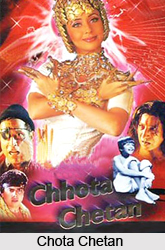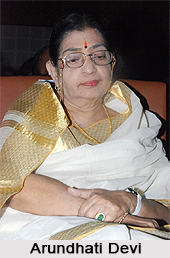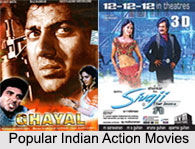 The genres of the mainstream Commercial Cinema in India comprises number of significant themes and subjects that find repeated expression. Romantic love stories, action and revenge thrillers, social drama and injustice, patriotism, comedy, friendships and male bonding, animation and horror, mythology and devotion are the genres of Indian commercial films. The themes incorporated in these different commercial genres reflect a distinctively culture-specific approach that is adopted to give these commercial films a characteristic Indian outlook. It is for these genres and their respective appeals that Indian Cinema cannot do without commercial movies that drive masses to the theatres.
The genres of the mainstream Commercial Cinema in India comprises number of significant themes and subjects that find repeated expression. Romantic love stories, action and revenge thrillers, social drama and injustice, patriotism, comedy, friendships and male bonding, animation and horror, mythology and devotion are the genres of Indian commercial films. The themes incorporated in these different commercial genres reflect a distinctively culture-specific approach that is adopted to give these commercial films a characteristic Indian outlook. It is for these genres and their respective appeals that Indian Cinema cannot do without commercial movies that drive masses to the theatres.
Action Thriller Genre in Indian Commercial Cinema
The action and thriller genre are one of the most prominent genres of Indian commercial cinema, showcasing the typical idea of the hero fighting a group of bad men or the main villain, with stunt sequences and thrills that entertain the audience. Action films came largely into vogue in the 1970s and 80s with the rise of the concept of Angry Young Man initiated by megastar Amitabh Bachchan in the 1973 Hindi action drama "Zanjeer". Bollywood actors, such as Dharmendra, Vinod Khanna and Bachchan himself were the popular action icons of the time. Down south it was superstar Rajinikanth who set the trend in Tamil Cinema, followed by the legendary Kamal Haasan. "Sholay", "Shahenshah", "Agneepath", "Don", "Kohraam", "Dharam Veer", "Hukumat" were the action movies of the time and the late 80s saw the genre further promoted with emergence of action stars Sunny Deoland Sanjay Dutt, whose noted action films include "Ghayal", "Ghatak", "Khalnayak" and "Vaastav: The Reality". The 90s saw the rise of credible action stars Ajay Devgn and Akshay Kumar, the most noted movies of whom count "Khiladi", "Mohra", "Phool Aur Kaante" and "Haqeeqat". The popular action movies of the 21st century include "Indian", "Gangaajal", "Khakee" "Yuva", "Aan: Men At Work", "Company", "Dhoom" series, "Ek Hasina Thi", "Dus", "Race", "Singham" series, "Rowdy Rathore" and "Baby" in Hindi and "Run", "Sivaji: The Boss", "Billa", "Dasavathaaram" and "Enthiran" in Tamil.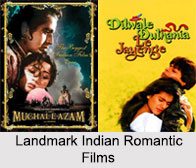
Romantic Genre in Indian Commercial Cinema
Romance and eroticism have always featured strongly in Indian Cinema. As with most traditions of cinema in the East and the West, romantic films and love stories are appealingly popular in India and have been so from the very inception. Here again, one sees clearly the shaping hand of culture. The sentiments expressed and the mannerisms of expression are also rooted in traditional culture. Compared to Western films, sexuality showcased in Indian films is less. Songs play a vital role in Indian romantic films, eroticism and sexuality often closely linked with them.
One filmmaker who epitomized romance on the silver screen was director-producer Yash Chopra. He is referred to as the "King of Romance", with his illustrious list of romantic films including the likes of "Silsila", "Kabhie Kabhie", "Darr", "Dil To Pagal Hai" and "Veer Zaara". Love and romance acquired new dimensions with Yash Chopra. In Indian cinema, the landmark romantic films include "Mughal-e-Azam", "Dilwale Dulhania Le Jayenge" and "Jodhaa Akbar". In the contemporary times, the romantic genre in Indian commercial cinema has seen changes and been amalgamated with comedy, colloquially referred to as Rom-Coms. Films today deal with the concepts of casual relationships, break-ups, infidelity, extra marital relations, separation and sexuality. These are no more taboos on the Indian celluloid.
Social Drama Genre in Indian Commercial Cinema
The social drama genre, also a prominent one in parallel cinema, figured prominently right from the beginning of Indian commercial cinema. What is commendable about the social dramas is the way the relevant and prevalent social issues are treated and candidly showcased for cinema. "Achhut Kannya" (1936) is an early exploration of an important social issue that had been highlighted by leaders like Gandhi and Nehru. The film deals with the love between a Brahmin boy and an "untouchable" girl. Through this tragic film the filmmakers called for attention to the problem of untouchability in the country. Films on similar themes were also made later, such as Bimal Roy`s "Sujata" that stands out.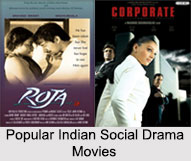
"Mother India" (1957) is a classic film that portrayed the concept of Indian womanhood. Mani Ratnam"s "Bombay" (1995) explores the highly sensitive issue about relations between Hindus and Muslims in India. He has also depicted human relationships against the background of Indian politics in films "Roja" and "Dil Se..".
Films of the contemporary era brilliantly showcase the social reality and sensitive issues that specifically pertain to sections of our society. Such films include "Corporate", "Life in a… Metro", "Chak De... India", "Fashion", "Traffic Signal" and "Pink".
Patriotic Genre in Indian Commercial Cinema
Patriotism is a common emotion that binds India, a land of humongous religious and cultural diversity. From the inception there had been films that were made with national sentiments, mostly revolving around Indian freedom struggle and freedom fighters. Early patriotic films include "Kismet", "Shaheed", "Vigathakumaran", "Balan", "Kunjali Marakkar" and "Purab Aur Paschim". While films based on Indian freedom struggle continued to be produced, such as "The Legend of Bhagat Singh" and "23rd March, 1931: Shaheed", the concept of patriotism evolved in the contemporary era and were interspersed with emotional ties, military wars, etc. Notable patriotic films of the 21st century include "Lagaan", "Swades" and "Lakshya".
Comic Genre in Indian Commercial Cinema
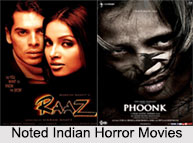 Comedy in movies was earlier merely for comic relief. The genre was initiated in 1930s, when the comic duo of Ghory and Dixit coupled to create an Indian version of Laurel and Hardy. Bollywood started producing movies with comedy as the central theme at regular intervals. Indian film comedians like Johnny Walker, Mehmood, Tun Tun, Mukri, Rabi Ghosh and Santosh Dutta earned a name for themselves in the genre. In the year 1958, Bollywood witnessed the first full-fledged mainstream comedy film "Chalti Ka Naam Gaadi" which also set the stage for the arrival of Kishore Kumar as a comedian in Hindi cinema. In the hands of Manmohan Desai the traits of comedy in Hindi films got a notch higher and his "Amar Akbar Anthony" became a true representation of an ideal comedy. The 70s witnessed the comedies by Hrishikesh Mukherjee and Basu Chatterjee. In the recent times, the most noted comedy films include the directorial works of Rajkumar Hirani, "Munna Bhai M.B.B.S." and its sequel "Lage Raho Munna Bhai", "3 Idiots" and "PK", while other popular ones are by Priyadarshan, such as "Hera Pheri", "Hungama", "Hulchul" and "Bhool Bhulaiyaa" that is one of the well-known examples of the horror comedy genre.
Comedy in movies was earlier merely for comic relief. The genre was initiated in 1930s, when the comic duo of Ghory and Dixit coupled to create an Indian version of Laurel and Hardy. Bollywood started producing movies with comedy as the central theme at regular intervals. Indian film comedians like Johnny Walker, Mehmood, Tun Tun, Mukri, Rabi Ghosh and Santosh Dutta earned a name for themselves in the genre. In the year 1958, Bollywood witnessed the first full-fledged mainstream comedy film "Chalti Ka Naam Gaadi" which also set the stage for the arrival of Kishore Kumar as a comedian in Hindi cinema. In the hands of Manmohan Desai the traits of comedy in Hindi films got a notch higher and his "Amar Akbar Anthony" became a true representation of an ideal comedy. The 70s witnessed the comedies by Hrishikesh Mukherjee and Basu Chatterjee. In the recent times, the most noted comedy films include the directorial works of Rajkumar Hirani, "Munna Bhai M.B.B.S." and its sequel "Lage Raho Munna Bhai", "3 Idiots" and "PK", while other popular ones are by Priyadarshan, such as "Hera Pheri", "Hungama", "Hulchul" and "Bhool Bhulaiyaa" that is one of the well-known examples of the horror comedy genre.
Horror Genre in Indian Commercial Cinema
The horror films in India are still at the nascent stage, although there are several films that have helped in establishing horror as an independent genre in Indian cinema. Directors like Bimal Roy, Ram Gopal Varma, Priyadarshan, Vikram Bhatt and others have successfully explored the horror genre with films like "Madhumati", "Bhoot", "Raaz" and "Haunted 3D".
Animation Genre in Indian Commercial Cinema
The trend of animation films has become popular in India, especially for the children audience. With corporate sectors ready to invest, such films are now being made by the leading production houses in India, with advanced VFX technology. Well known stars are also lending their voices for the animated characters. Popular examples of Indian animated movies include "Pandavas: The Five Warriors", "Hanuman", "Ghatothkach", "Inimey Nangathan", "Toonpur Ka Superrhero", "Mahabharat", "Kochadaiiyaan" and "Chaar Sahibzaade".
